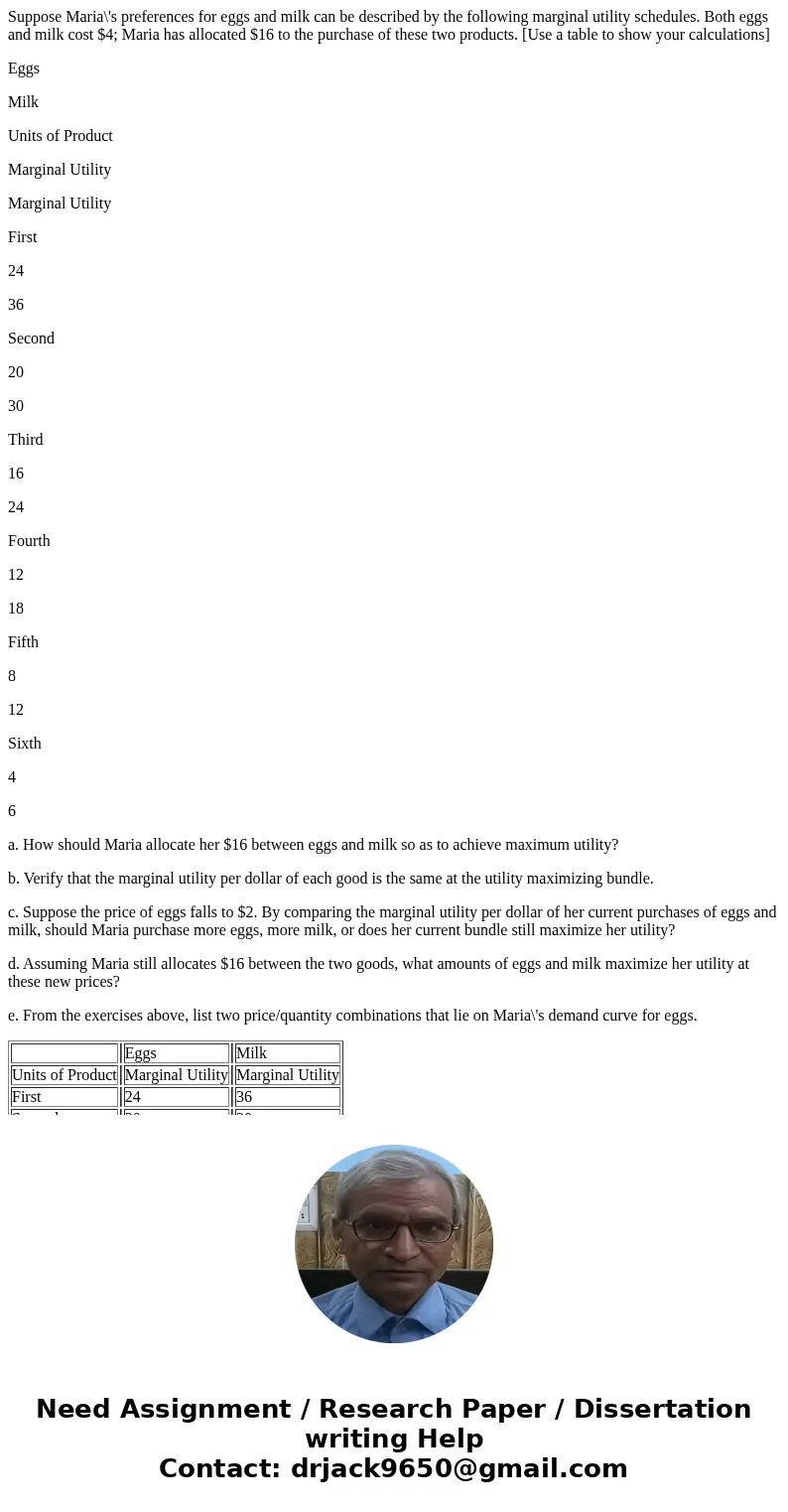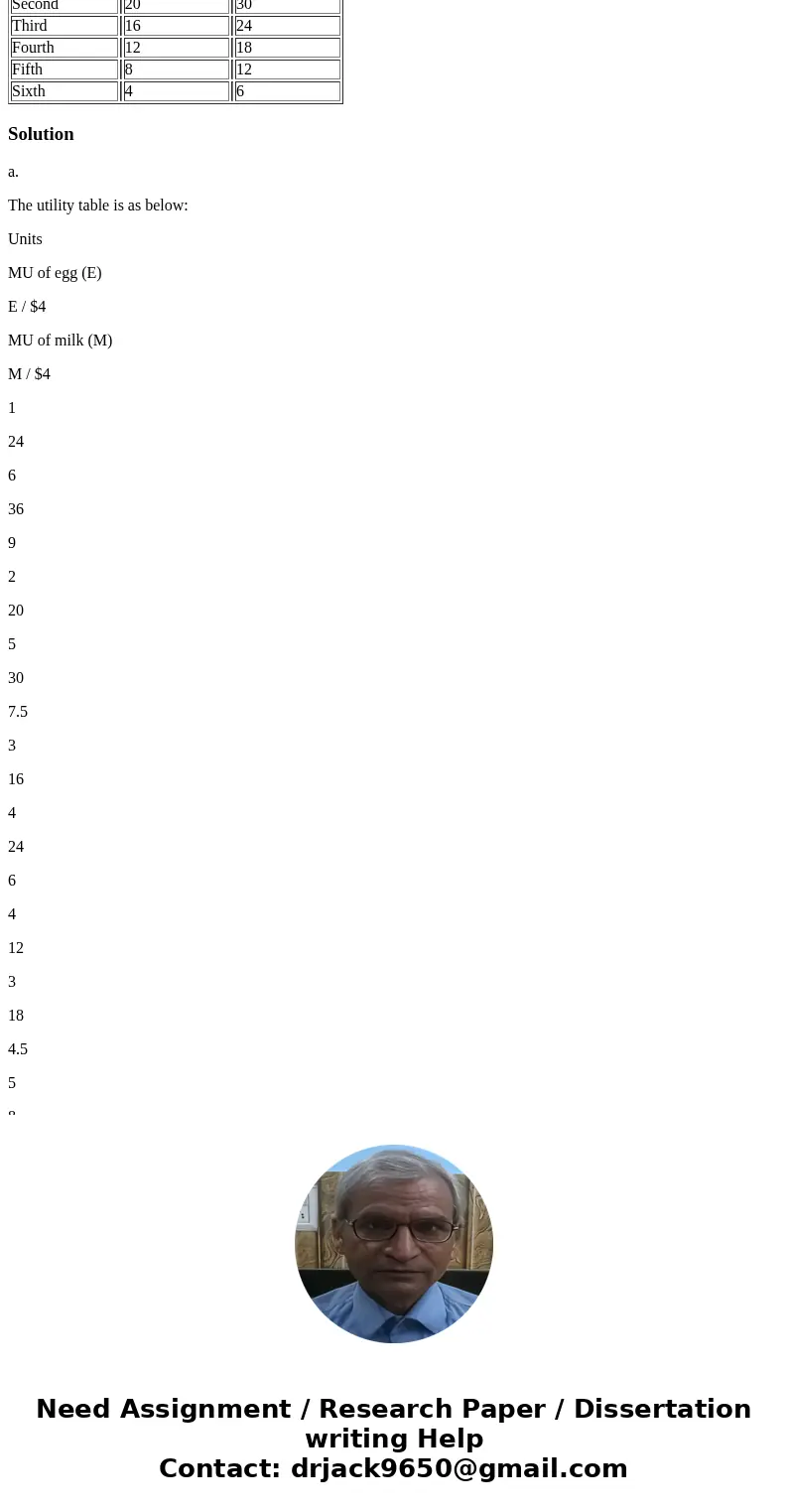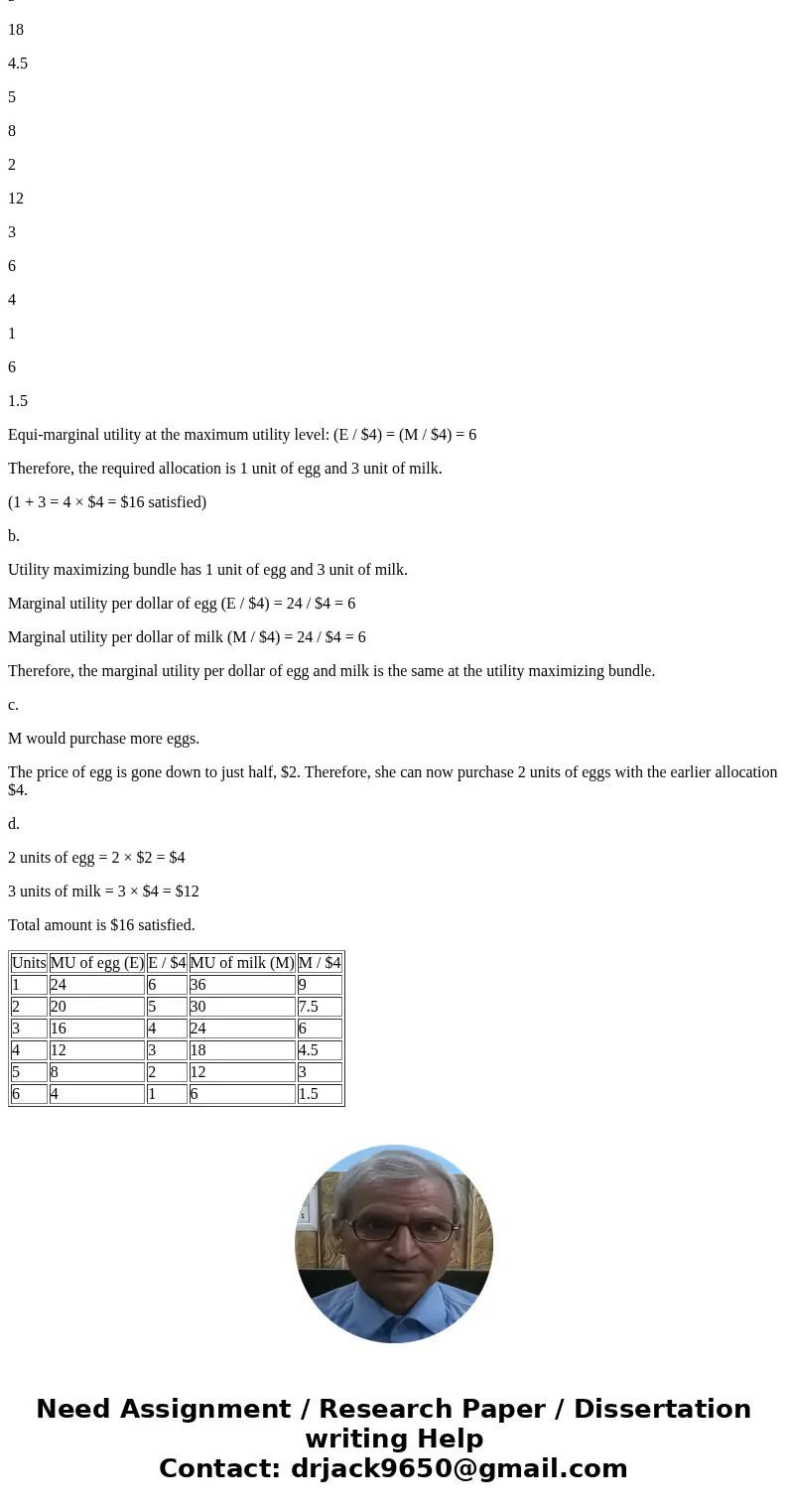Suppose Marias preferences for eggs and milk can be describe
Suppose Maria\'s preferences for eggs and milk can be described by the following marginal utility schedules. Both eggs and milk cost $4; Maria has allocated $16 to the purchase of these two products. [Use a table to show your calculations]
Eggs
Milk
Units of Product
Marginal Utility
Marginal Utility
First
24
36
Second
20
30
Third
16
24
Fourth
12
18
Fifth
8
12
Sixth
4
6
a. How should Maria allocate her $16 between eggs and milk so as to achieve maximum utility?
b. Verify that the marginal utility per dollar of each good is the same at the utility maximizing bundle.
c. Suppose the price of eggs falls to $2. By comparing the marginal utility per dollar of her current purchases of eggs and milk, should Maria purchase more eggs, more milk, or does her current bundle still maximize her utility?
d. Assuming Maria still allocates $16 between the two goods, what amounts of eggs and milk maximize her utility at these new prices?
e. From the exercises above, list two price/quantity combinations that lie on Maria\'s demand curve for eggs.
| Eggs | Milk | |||
| Units of Product | Marginal Utility | Marginal Utility | ||
| First | 24 | 36 | ||
| Second | 20 | 30 | ||
| Third | 16 | 24 | ||
| Fourth | 12 | 18 | ||
| Fifth | 8 | 12 | ||
| Sixth | 4 | 6 |
Solution
a.
The utility table is as below:
Units
MU of egg (E)
E / $4
MU of milk (M)
M / $4
1
24
6
36
9
2
20
5
30
7.5
3
16
4
24
6
4
12
3
18
4.5
5
8
2
12
3
6
4
1
6
1.5
Equi-marginal utility at the maximum utility level: (E / $4) = (M / $4) = 6
Therefore, the required allocation is 1 unit of egg and 3 unit of milk.
(1 + 3 = 4 × $4 = $16 satisfied)
b.
Utility maximizing bundle has 1 unit of egg and 3 unit of milk.
Marginal utility per dollar of egg (E / $4) = 24 / $4 = 6
Marginal utility per dollar of milk (M / $4) = 24 / $4 = 6
Therefore, the marginal utility per dollar of egg and milk is the same at the utility maximizing bundle.
c.
M would purchase more eggs.
The price of egg is gone down to just half, $2. Therefore, she can now purchase 2 units of eggs with the earlier allocation $4.
d.
2 units of egg = 2 × $2 = $4
3 units of milk = 3 × $4 = $12
Total amount is $16 satisfied.
| Units | MU of egg (E) | E / $4 | MU of milk (M) | M / $4 |
| 1 | 24 | 6 | 36 | 9 |
| 2 | 20 | 5 | 30 | 7.5 |
| 3 | 16 | 4 | 24 | 6 |
| 4 | 12 | 3 | 18 | 4.5 |
| 5 | 8 | 2 | 12 | 3 |
| 6 | 4 | 1 | 6 | 1.5 |



 Homework Sourse
Homework Sourse